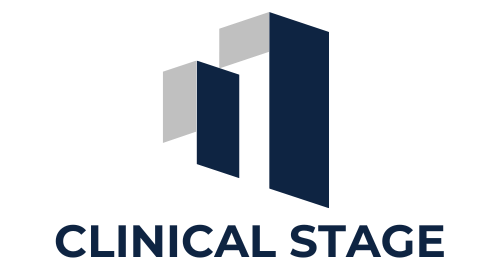The Importance of Transparency in Clinical Trials
To fully explore the significance of transparency in clinical trials, we must delve deeper into the various facets and implications of this critical aspect of medical research. Transparency in clinical trials encompasses not only the ethical considerations and regulatory requirements but also the intricate dynamics between stakeholders, the potential barriers to achieving it, and the forward-looking strategies to enhance and sustain transparent practices.
Clinical trials are the cornerstone of evidence-based medicine, providing the scientific foundation for new treatments, interventions, and medical devices. These trials are essential for determining the safety and efficacy of new medical approaches, ultimately guiding clinical practice and informing healthcare policies. The process of conducting a clinical trial involves several stages, including preclinical research, clinical development, regulatory approval, and post-market surveillance. Each of these stages requires meticulous planning, execution, and reporting to ensure the validity and reliability of the findings.
Transparency in clinical trials refers to the open and honest disclosure of all aspects of the trial process, from its design and methodology to the reporting of results and data sharing. This transparency is not merely a procedural requirement but a fundamental ethical principle that upholds the integrity of the research process. It involves providing clear, accurate, and comprehensive information to all stakeholders, including trial participants, researchers, healthcare providers, and the general public. By doing so, transparency fosters trust, accountability, and ethical conduct in medical research.
The Role of Transparency in Public Trust
Transparency plays a pivotal role in building and maintaining public trust in the clinical trial process. Public trust is essential for the successful recruitment and retention of trial participants, as well as for the broader acceptance of new medical treatments. When clinical trials are conducted transparently, they are perceived as credible and trustworthy, which is crucial for encouraging public engagement and participation. This trust is built on the foundation of openness and honesty, where stakeholders are assured that the research is conducted ethically and that the results are reported accurately.
Historical cases of trust breaches in clinical trials highlight the detrimental effects of a lack of transparency. The Tuskegee Syphilis Study is a notorious example where researchers failed to inform participants about the availability of effective treatment, resulting in significant harm and long-term mistrust in the medical research community, particularly among African Americans. Another case involves the drug Vioxx, which was withdrawn from the market after it was discovered that data on its cardiovascular risks were not fully disclosed during clinical trials. These incidents underscore the importance of transparency in preventing unethical practices and maintaining public confidence in medical research.
Transparent practices in clinical trials also impact the public's perception and willingness to participate in these studies. When the public is confident that trials are conducted transparently, they are more likely to participate and encourage others to do so. This participation is crucial for the success of clinical trials, as it ensures a diverse and representative sample, which is necessary for the generalizability of the findings. Furthermore, transparency in the dissemination of results allows the public to see the direct benefits and advancements resulting from clinical trials, reinforcing the value of participating in medical research.
Ethical Considerations in Clinical Trials
Ethical considerations are at the heart of transparency in clinical trials. One of the most critical aspects of ethical research is informed consent, which requires that participants are fully informed about the nature of the trial, including its purpose, procedures, risks, and benefits. This process is not merely a formality but a cornerstone of ethical research, ensuring that participants can make autonomous and informed decisions about their involvement. Transparency in informed consent involves providing clear, comprehensive, and understandable information, allowing participants to weigh the potential risks and benefits and make a voluntary decision to participate.
Participant safety and rights are paramount in clinical trials, and transparency is crucial in safeguarding these interests. Researchers have an ethical obligation to report all adverse events and side effects, ensuring that participants are aware of any potential risks. This transparency is vital for protecting participant safety, as it allows for the monitoring and assessment of the trial's safety profile. Moreover, transparent reporting ensures that participants are fully informed throughout the trial, enabling them to make informed decisions about continuing their participation.
Beyond the individual participant level, transparency also plays a broader role in protecting public health. By openly sharing data on adverse events and side effects, researchers contribute to a more comprehensive understanding of the risks associated with new treatments. This information is critical for healthcare providers and regulatory authorities in making informed decisions about the approval and use of new medical interventions. Thus, transparency in reporting adverse events is not only an ethical obligation but also a public health imperative.
Regulatory and Legal Frameworks Supporting Transparency
Regulatory and legal frameworks are crucial in promoting transparency in clinical trials. These frameworks provide the guidelines and standards that researchers and sponsors must adhere to, ensuring that trials are conducted ethically and that the findings are accessible to the public and the scientific community. Key regulatory bodies, such as the U.S. Food and Drug Administration (FDA), the European Medicines Agency (EMA), and the World Health Organization (WHO), play a pivotal role in setting these standards and enforcing compliance.
Regulatory requirements for transparency often include the mandatory registration of clinical trials, public reporting of results, and the disclosure of conflicts of interest. For instance, the FDA's ClinicalTrials.gov is a publicly accessible database where researchers are required to register their trials and report results. This platform provides a centralized repository of clinical trial information, promoting transparency and facilitating access to data for researchers, healthcare providers, and the public. Similarly, the European Medicines Agency's EudraCT database serves as a comprehensive resource for clinical trial data in the European Union.
Data sharing and public access to clinical trial data are essential components of transparency. Platforms like ClinicalTrials.gov and the European Clinical Trials Register provide the public and the scientific community with access to detailed information about ongoing and completed trials. This openness is crucial for advancing medical knowledge, as it allows for the aggregation and analysis of data across multiple studies, facilitating meta-analyses and systematic reviews. By making trial data publicly available, these platforms promote transparency and accountability, ensuring that the findings are subject to scrutiny and validation by the broader scientific community.
Benefits of Transparency for Stakeholders
Transparency in clinical trials offers numerous benefits to various stakeholders, including researchers, sponsors, patients, and healthcare providers. For researchers and sponsors, transparent practices enhance the credibility and reliability of research findings. When trial data and methodologies are openly shared, other researchers can replicate and validate the findings, strengthening the evidence base and advancing scientific knowledge. This openness also fosters collaboration and innovation, as researchers can build on each other's work, leading to new discoveries and breakthroughs.
For patients and healthcare providers, transparent information is invaluable for making informed healthcare decisions. Patients who have access to detailed information about clinical trials, including potential risks and benefits, can make more informed choices about participating in these studies. This transparency empowers patients, giving them greater control over their healthcare decisions. Healthcare providers also benefit from transparent reporting, as it informs clinical practice and treatment guidelines. By staying informed about the latest clinical trial results, healthcare providers can offer evidence-based recommendations to their patients, improving the quality of care.
Case examples illustrate the positive impact of transparent reporting on patient care and treatment options. For instance, the transparent reporting of clinical trial results for cancer therapies has led to significant advancements in treatment options, offering new hope to patients with previously untreatable forms of cancer. Similarly, the transparent reporting of clinical trial data for cardiovascular drugs has informed treatment guidelines, helping healthcare providers make better-informed decisions about managing patients with heart disease. These examples highlight the critical role of transparency in advancing medical knowledge and improving patient outcomes.
Challenges and Barriers to Achieving Transparency
Despite the clear benefits, achieving transparency in clinical trials is not without its challenges and barriers. On a practical level, maintaining transparency involves logistical and technical challenges. For instance, managing and sharing vast amounts of data requires robust infrastructure and technology. Ensuring the accuracy, completeness, and security of this data can be resource-intensive, demanding significant investment from trial sponsors and institutions. Moreover, the process of data sharing must comply with stringent data protection regulations, adding another layer of complexity to the task.
The cost associated with maintaining transparency is another significant challenge. Transparent practices, such as comprehensive reporting and data sharing, often require additional resources, including time, personnel, and technology. Smaller organizations or those with limited funding may find these costs prohibitive, potentially hindering their ability to conduct transparent research. This financial burden can create disparities in transparency practices, with larger, well-funded institutions being better equipped to comply with transparency standards than smaller or under-resourced organizations.
Cultural and organizational barriers also play a role in hindering transparency in clinical trials. Within the research community, there may be resistance to transparency due to concerns about intellectual property, competitive advantage, or fear of public scrutiny. Researchers and sponsors might worry that disclosing negative or inconclusive results could damage their reputation or hinder future funding opportunities. Additionally, some organizations may lack a culture of openness, viewing transparency as an unnecessary burden rather than a fundamental ethical obligation. Overcoming these cultural barriers requires a shift in mindset, emphasizing the collective benefits of transparency for the scientific community and society as a whole.
Future Directions and Recommendations
To enhance transparency in clinical trials, several recommendations can be made. First, regulatory bodies and policymakers should continue to strengthen and enforce transparency requirements. This could include mandating the registration of all clinical trials, requiring the publication of results within a specified timeframe, and ensuring that all data, including negative findings, are made publicly available. Additionally, incentives could be offered to encourage compliance with transparency standards, such as providing funding or recognition for transparent practices.
Technology and digital platforms will play a crucial role in facilitating transparency in the future. Advancements in data management systems, blockchain technology, and digital platforms can enhance the efficiency and security of data sharing. For instance, blockchain technology could provide a secure, transparent, and immutable record of clinical trial data, ensuring its integrity and traceability. Digital platforms could also improve accessibility, allowing researchers, healthcare providers, and the public to easily access and interpret trial data. As technology continues to evolve, it will be essential to integrate these tools into the clinical trial process to support transparency.
The future of clinical trial transparency is closely tied to the evolving relationship between transparency, public trust, and innovation in healthcare. As transparency practices become more widespread, they will likely lead to greater public trust and participation in clinical trials, thereby accelerating the pace of medical innovation. Additionally, transparent practices can enhance the quality and reliability of research findings, contributing to evidence-based medicine and improving patient outcomes. The evolving relationship between transparency, public trust, and innovation highlights the need for a continued commitment to transparent practices in clinical research.
Notable Labs: Pioneering Transparency in Clinical Trials
Notable Labs is at the forefront of fostering transparency in clinical trials, recognizing its critical role in advancing medical research and patient care. Transparency in clinical trials involves the open and honest disclosure of all aspects of the trial process, including design, methodology, and data sharing. This practice is not only a procedural necessity but also a fundamental ethical principle that upholds the integrity of the research process.
At Notable Labs, transparency is central to our mission. We believe that clear, accurate, and comprehensive information should be provided to all stakeholders—trial participants, researchers, healthcare providers, and the general public. By doing so, we aim to build trust, foster accountability, and promote ethical conduct in medical research.
Our commitment to transparency extends to every stage of the clinical trial process, from preclinical research and clinical development to regulatory approval and post-market surveillance. We meticulously plan, execute, and report our findings to ensure the validity and reliability of our research. Notable Labs also actively participates in platforms like ClinicalTrials.gov, ensuring that our trial data is accessible to the public and the scientific community.
In an era where public trust in medical research is paramount, Notable Labs' dedication to transparency helps to maintain and strengthen this trust. By openly sharing our data and methodologies, we not only enhance the credibility of our findings but also contribute to a broader understanding of the safety and efficacy of new treatments. This transparency is crucial for the successful recruitment and retention of trial participants, as well as for the broader acceptance of new medical treatments.
As we continue to innovate and lead in the field of medical research, Notable Labs remains committed to upholding the highest standards of transparency. We believe that embracing transparency is key to unlocking new discoveries, improving healthcare outcomes, and maintaining public confidence in the scientific process.
Conclusion
In conclusion, transparency in clinical trials is a fundamental ethical principle and a practical necessity for advancing medical research and improving public health. Transparent practices are essential for building and maintaining public trust, protecting participant rights and safety, and advancing scientific knowledge. Despite the challenges and barriers to achieving transparency, the benefits far outweigh these obstacles. By fostering a culture of transparency, we can ensure that clinical trials are conducted ethically, that findings are reliable and accessible, and that public trust in medical research is maintained.
As we move forward, it is crucial for all stakeholders—researchers, sponsors, regulatory bodies, healthcare providers, and patients—to prioritize and advocate for transparency in clinical trials. By doing so, they can help create a research environment that is open, ethical, and committed to the highest standards of scientific rigor. The collective responsibility to ensure transparency in clinical trials is not just about compliance; it is about fostering a culture of trust, accountability, and respect for the contributions of trial participants and the wider community. As the field of medical research continues to evolve, embracing transparency will be key to unlocking new discoveries, improving healthcare outcomes, and maintaining the public's confidence in the scientific process.










